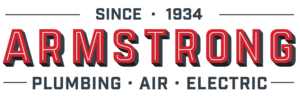Heating Equipment is one of the leading causes of home fire deaths according to the National Fire Prevention association (www.NFPA.org)

As frigid temperatures sweep across West Texas, Lubbockites are turning on heaters and furnaces that haven’t been used in months and this can pose fire dangers. Half of home heating fires are reported during the months of December, January, and February. The increase is attributed to heating equipment. Roughly 70,000 reported U.S. home fires were tied to heating devices gone wrong, according to the National Fire Protection Association.
The loss of 600 civilian deaths and nearly 1,600 injuries cited by the study can be prevented. We can reduce the number of home heating fires by taking some simple precautions and using heating equipment properly.
Here are a few Home Heating Safety Tips and precautions you can do to prevent most
heating fires from happening.
- Keep anything that can burn at least three-feet away from heating equipment, like the furnace, fireplace, wood stove, or portable space heater.
- Have a three-foot “kid-free zone” around open fires and space heaters.
- Never use your oven to heat your home.
- Have a trained HVAC professional install heating equipment, water heaters or central heating equipment according to the local codes and manufacturer’s instructions.
- Have heating equipment and chimneys cleaned and inspected every year by a qualified professional.
- Remember to turn portable heaters off when leaving the room or going to bed.
- Always use the right kind of fuel, specified by the manufacturer, for fuel burning space heaters.
- Make sure the fireplace has a sturdy screen to stop sparks from flying into the room. Ashes should be cool before putting them in a metal container. Keep the container a safe distance away from your home.
- Test smoke alarms monthly. Roughly two thirds of home fire deaths happen in homes with no smoke alarms or no working smoke alarms. Working smoke alarms cut the risk of dying in reported home fires in half.
- Use common sense and don’t take warning labels on heating devices lightly.
Top causes of Heating Equipment Fires are:
- Combustible material near the furnace
- Failure to Clean and Maintain; It is recommended that you have your furnace checked prior to the first time you use it each winter.
- Control Malfunction; specifically, high temperature limit switch, thermocouple pilot flame failure sensor and flue spillage sensor. Failure of any of these can result in a fire.
- Improper Furnace installation; always have your equipment installed by a trained HVAC professional.
- Cracked Heat Exchanger; Heat exchanger cracks not only can be a fire hazard, but can also cause indoor air pollution with serious health effects.
- Sludge; accumulation of debris or sludge can cause over heating and result in fire.
- Improper Wiring; although these are more rare, they can happen, especially if your equipment is not installed by a trained HVAC professional and according to the manufacturers instructions.







